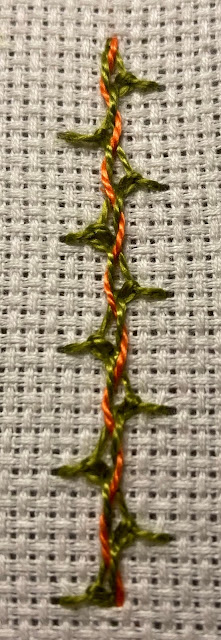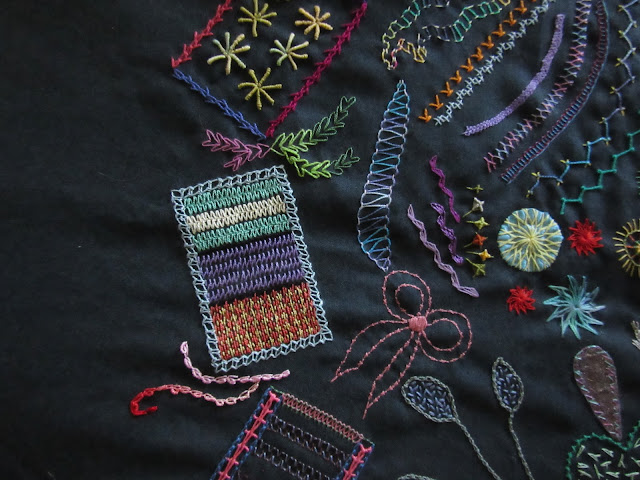Today's lesson falls on World Embroidery Day! So why not join me and the rest of the embroidery community and stitch something?
I have the perfect stitch for you, especially if you remember stitch number 254? Alternating Mountmellick Stitch?
In that blog post, I mentioned that Mary Corbet of Needle 'n Thread in her series of Stitch Fun had tweaked the Mountmellick Stitch into a laced version.
Today we are lacing the Alternating Mountmellick Stitch that way.
Go to Needle 'n Thread for a really clear tutorial.
Or make do with my photo instructions:
Start by making a line of Alternating Mountmellick Stitch.
under the first Chain Stitch's left side.
under the second Chain Stitch's right side.
Make sure you don't bite any of the fabric.
like metallic,
Homework:
These samplers scream for Lacing!
























































